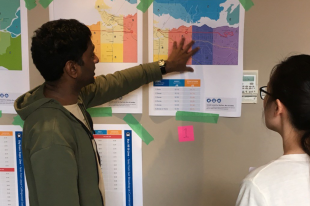Blogpost by Matt Andrews:

“Polls suggest that governments across the world face high levels of citizen dissatisfaction, and low levels of citizen trust. The 2017 Edelman Trust Barometer found, for instance, that only 43% of those surveyed trust Canada’s government. Only 15% of those surveyed trust government in South Africa, and levels are low in other countries too—including Brazil (at 24%), South Korea (28%), the United Kingdom (36%), Australia, Japan, and Malaysia (37%), Germany (38%), Russia (45%), and the United States (47%). Similar surveys find trust in government averaging only 40-45% across member countries of the Organization for Economic Cooperation and Development (OECD), and suggest that as few as 31% and 32% of Nigerians and Liberians trust government.
There are many reasons why trust in government is deficient in so many countries, and these reasons differ from place to place. One common factor across many contexts, however, is a lack of confidence that governments can or will address key policy challenges faced by citizens.
Studies show that this confidence deficiency stems from citizen observations or experiences with past public policy failures, which promote jaundiced views of their public officials’ capabilities to deliver. Put simply, citizens lose faith in government when they observe government failing to deliver on policy promises, or to ‘get things done’. Incidentally, studies show that public officials also often lose faith in their own capabilities (and those of their organizations) when they observe, experience or participate in repeated policy implementation failures. Put simply, again, these public officials lose confidence in themselves when they repeatedly fail to ‘get things done’.
I call the ‘public policy futility’ trap—where past public policy failure leads to a lack of confidence in the potential of future policy success, which feeds actual public policy failure, which generates more questions of confidence, in a vicious self fulfilling prophecy. I believe that many governments—and public policy practitioners working within governments—are caught in this trap, and just don’t believe that they can muster the kind of public policy responses needed by their citizens.
Along with my colleagues at the Building State Capability (BSC) program, I believe that many policy communities are caught in this trap, to some degree or another. Policymakers in these communities keep coming up with ideas, and political leaders keep making policy promises, but no one really believes the ideas will solve the problems that need solving or produce the outcomes and impacts that citizens need. Policy promises under such circumstances center on doing what policymakers are confident they can actually implement: like producing research and position papers and plans, or allocating inputs toward the problem (in a budget, for instance), or sponsoring visible activities (holding meetings or engaging high profile ‘experts’ for advice), or producing technical outputs (like new organizations, or laws). But they hold back from promising real solutions to real problems, as they know they cannot really implement them (given past political opposition, perhaps, or the experience of seemingly interactable coordination challenges, or cultural pushback, and more)….(More)”.


